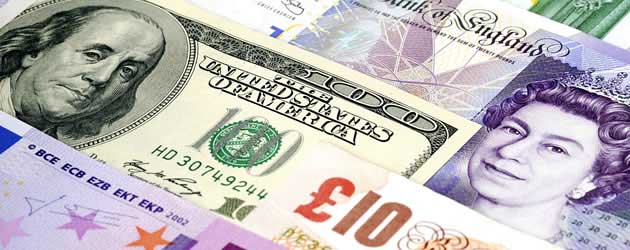
The Pound to US Dollar exchange rate (GBP/USD) came very close to a fresh 27-month high last night despite comments from Federal Reserve Bank of St. Louis President James Bullard suggesting that the US Central Bank could cutback on asset purchases later this month.
Throughout the second half of this year financial markets, and currencies in particular, have been dictated by speculation that the Federal Reserve intends to reduce the pace of its QE3 stimulus programme. With US stock indices reaching fresh all-time highs on a monthly basis, the Fed knows that if it doesn’t stop pumping cheap cash into markets then there is a fairly strong probability that a potentially dangerous asset bubble could be formed.
One of the main objectives of the QE3 programme was, and is, to foster improvements in the labour market. Last Friday it was reported that the US economy added 203,000 new jobs in November, 18,000 more than analysts had expected. The positive US Non-farm Payrolls report was also accompanied by an optimistic Unemployment report, which saw the headline jobless rate fall from 7.3% to 7.0%.
To put things in perspective the average NFP score over the past 12 months has been 195,000 and the Unemployment Rate has fallen from 8.1% to 7.0% in the 14 months since the Fed initiated its QE3 scheme back in September 2012.
Yesterday evening Fed St. Louis President James Bullard commented that:
“Based on labour market data alone, the probability of a reduction in the pace of asset purchases has increased”
Given the marked improvement in the Unemployment Rate, Bullard has a point. However, the US Dollar did not rally in response to his comments, nor did it appreciate when the robust labour market readings were released last Friday.
There are a few possible explanations for the lack of support for the ‘Greenback’.
Firstly, investors could be wary that a repeat of the phantom taper in September could be on the cards. Due to months of speculation and improvements in economic conditions markets were ready for a cutback in stimulus during September. However, the Fed did not oblige, wisely opting to maintain the pace of its QE3 scheme at $85 billion per month ahead of the debt ceiling debacle that left economic confidence shattered for 16 days during October. There is another important budget deadline in January and for this reason it is entirely feasible that the Fed could delay the taper again, until the fiscal situation is more stable.
Secondly, the Consumer Price Index inflation rate has halved from 2.0% to 1.0% since August, which could be posing a problem for Fed officials. Quantitative easing is seen to stoke inflation by increasing the money supply and making credit cheaper for businesses, banks and individuals. Conversely, monetary tightening, even in the form of cutting back on non-standard policy, could quite conceivably have a downward impact on CPI. For this reason the US Central Bank could decide to hold back on the taper until a later date when the inflation rate is closer to the Fed’s target of just under 2.0%.
Thirdly, soon-to-be Federal Reserve President Janet Yellen is a notoriously dovish Central Banker. Accordingly, traders may be less inclined to put their faith in the ‘Greenback’ ahead of the appointment of a lady who is fairly outspoken in her support of quantitative easing.
With all things considered it is still very hard to call whether the Fed will reduce the pace of its stimulus programme on December 18th. But with GBP/USD enjoying a run above 1.6400 it seems that investors are not overly concerned with the possibility of the so-called ‘Dec-taper’ at this moment in time.

Comments are closed.